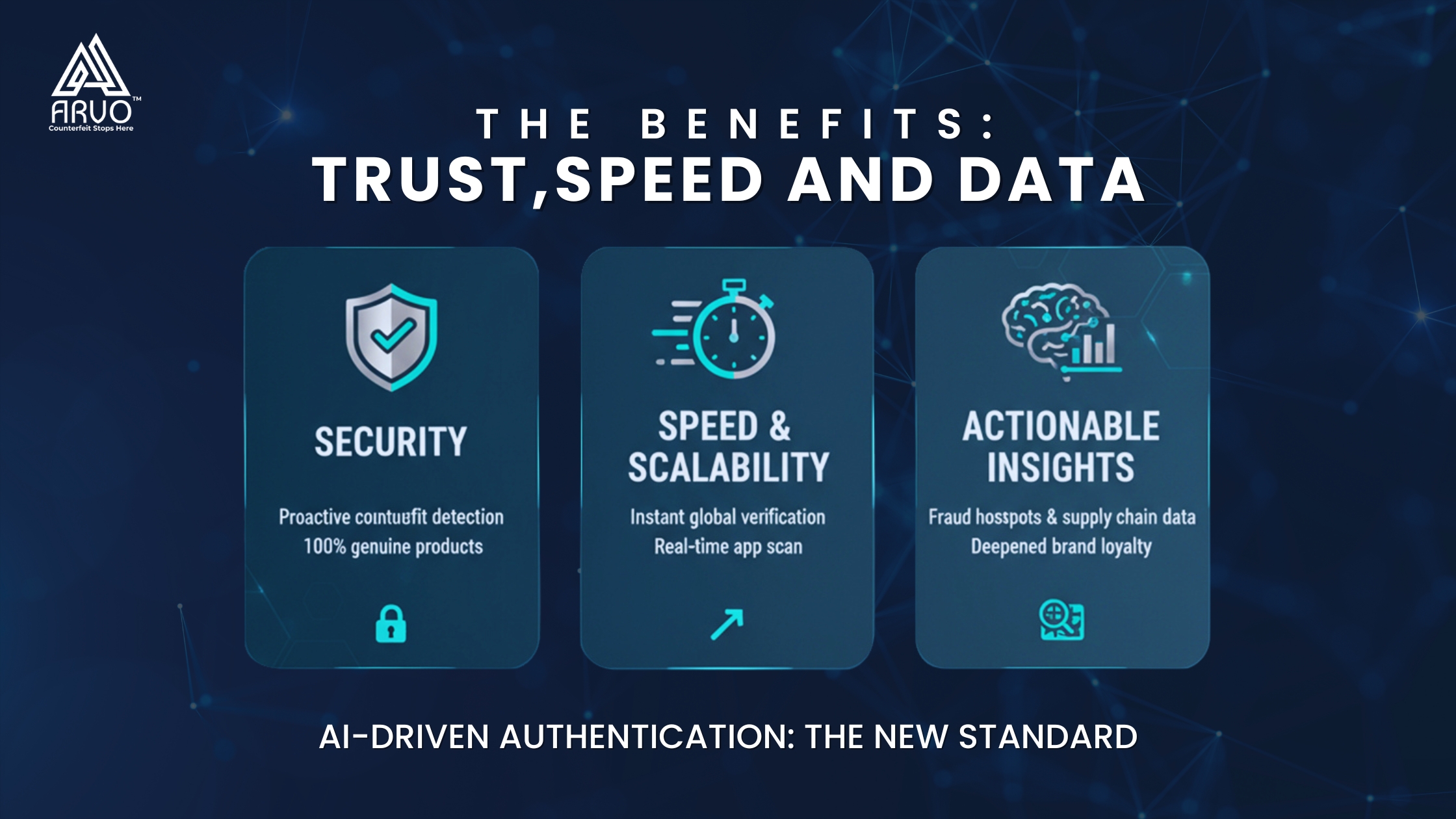
The world loses billions of dollars to counterfeiting. It damages brand image, causes customers to lose confidence in products, and even jeopardizes safety in critical regions. Companies have been employing fixed security marks like holograms and serial numbers for many years. But forgeries are now very well imitating those marks.
Introduce AI-based Authentication. It goes beyond the fixed marks and transforms the process into a rapid, intelligent, and large-scale defense. AI is not merely an assistant; it is now the new must-have to demonstrate that a product is real.
Why Traditional Authentication Is Failing
Conventional interventions are not working for two reasons:
Static Vulnerability: A Static feature is a hologram, a security thread, or a unique print on a package. After a counterfeiter manages to copy it, he/she can use it on a million counterfeit products. These characteristics are usually created to deceive the human eye, but not the high-tech scanning and duplication.
Inability to Scale: Manual audits of the supply chain are a sluggish, costly, and ineffective means of auditing the vast amount of e-commerce in the world. A brand is not able to physically examine every product that a customer purchases online.
The answer is a self-learning system that is dynamic and runs at machine speed. That is the strength of Artificial Intelligence.

The Rewrite of the Rules of Verification by AI.
With the help of AI, authentication is performed with the help of Machine Learning and Computer Vision, which generates a digital fingerprint of each product, which is so distinctive that it is impossible to duplicate it.
1. Visual-AI and Computer Vision.
This is the initial line of defense. Instead of searching for a code, AI examines a product itself.
- Micro-Pattern Analysis: The system identifies minute anomalies, such as pixel distortion, incompatible fonts, or an off-colour logo, which a human eye cannot detect, by training on high-resolution images of real objects.
- Hologram and Label Check: Visual-AI can identify small differences in reflectivity, location, and sub-surface structure, but counterfeit holograms can appear to be similar. All one has to do is scan a product or a code with a smartphone application to confirm authenticity.
2. Contextual and Behavioral Analytics.
AI extends the product and looks at the context of each scan, a digital guardian that proves the who, what, where, and when.
- Anomaly Detection: When a unique product code is scanned in three countries in two hours, the AI will consider the activity suspicious.
- Supply Chain Monitoring: AI is trained on the normal path of a product by connecting it to tracking information provided by QR codes or NFC chips. When a product is found on a grey-market website prior to its official launch or in a location it is not supposed to be, the system generates a high-priority notification.

The Benefits: Trust, Speed, and Data
The adoption of AI-driven authentication offers critical advantages for both businesses and consumers:
| Benefit | Impact for Brands | Impact for Consumers |
| Superior Security | Proactively identifies new, evolving counterfeiting techniques by constantly learning. | Ensures the product in hand is 100% genuine and safe to use. |
| Scalability & Speed | Handles thousands of verification requests globally, instantly, without increasing operational costs. | Provides a real-time authentication result in seconds via a simple app scan. |
| Actionable Insights | Every scan is a data loop point, offering insights into fraud hotspots, unauthorized distribution, and supply chain leaks. | Fosters deepened trust and loyalty with the brand through transparency. |
Major brands, particularly in luxury and pharmaceuticals, are already deploying these systems, reporting significant reductions in online counterfeits and substantial gains in consumer confidence.
The Future is Adaptive
As technology advances, AI will not only mark real or fake, but it will assess risk in the present. A quick code scan suffices in low-risk (first time someone has been scanned). The AI might require a more thorough visual inspection or a human inspection in high-risk situations (a lot of scans of a warehouse where dubious goods are sold).
AI-driven authentication is not a luxury—it’s a necessity. It is the only way to build a reliable, scalable, and future-proof defense against the sophistication of modern counterfeiters. For any brand that values its reputation and the safety of its customers, making this shift is no longer optional. It is the new, definitive standard for product verification.
FAQs
- Why is AI-based authentication more secure than conventional authentication methods such as holograms or regular QR codes?
Authentication based on AI is safer as it is always learning and evolving. Conventional techniques involve fixed, static characteristics that can be duplicated after being discovered. The AI system constantly examines new verification requests and data, actively identifying emerging counterfeiting methods and areas of fraud.
- What is the way the system delivers Actionable Insights?
Whenever a consumer or brand authenticates a product, the AI records that data point. It then identifies trends like geographic fraud hot spots, illegal distribution channels, and product weaknesses. This intelligence will enable the brand to focus on legal and operational responses rather than responding to isolated events.
- Will this technology reduce my production line or the consumer verification process?
No. AI is scalable and fast. It is capable of handling thousands of requests in real time, and no extra operational costs are involved. To consumers, the scan of a simple smartphone provides real-time results, and this makes the process fast and non-disruptive.
- What is the primary advantage to the end-consumer?
Trust and speed are the key advantages to consumers. They are given a 100 percent authentic confirmation that the product is safe, particularly in sensitive goods such as pharmaceuticals or cosmetics. They also receive an instant response through a mere scan, and this guarantees transparency and peace of mind at the point of purchase.